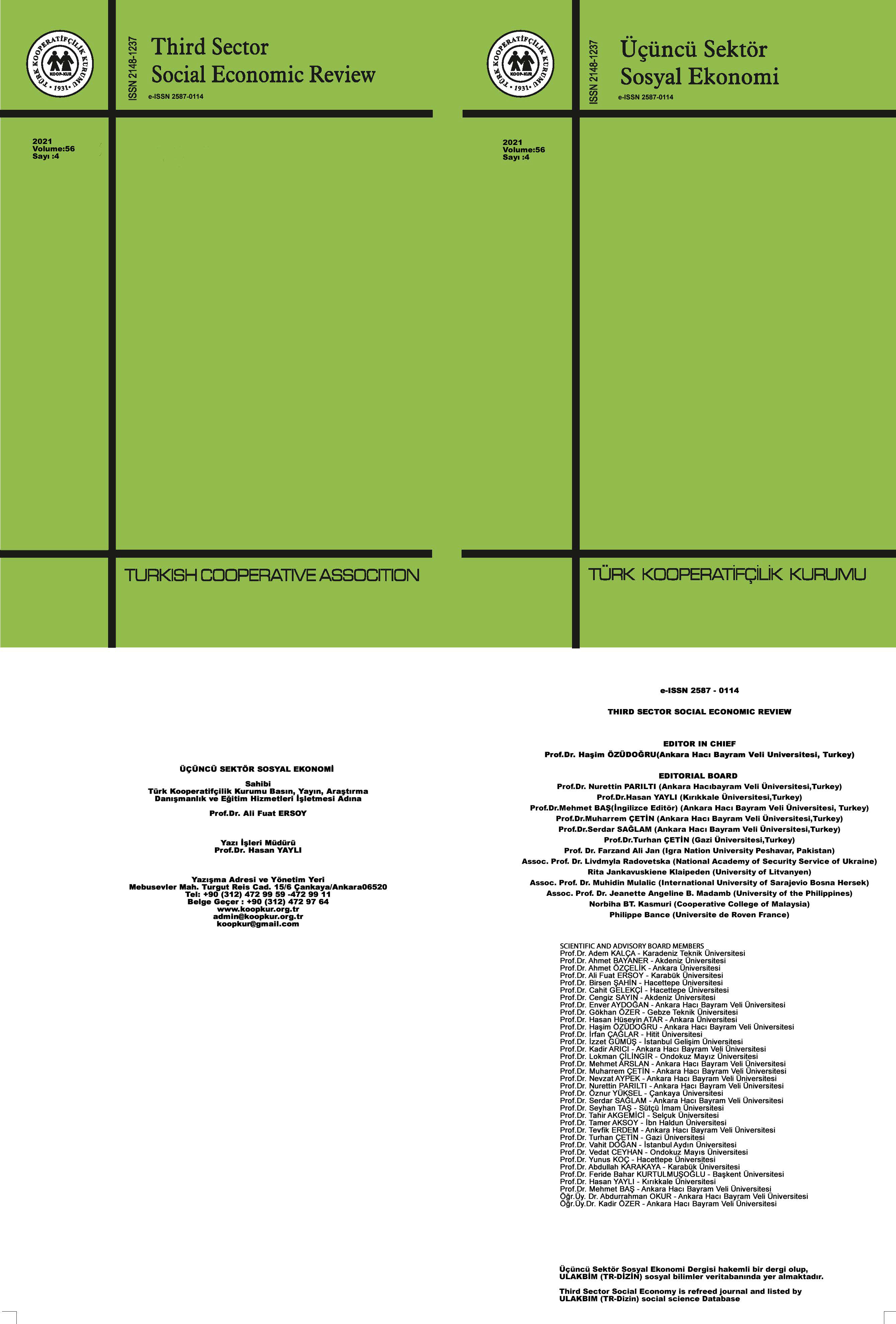SAĞLIK İŞLETMESİNDE EĞİTİM HİZMETLERİNİN ALGILANAN KALİTESİNİN ÖLÇÜLMESİ: “ÖZEL BİR HASTANEDE UYGULAMA”
DOI:
https://doi.org/10.15659/3.sektor-sosyal-ekonomi.21.10.1663Anahtar Kelimeler:
Sağlık işletmeleri- hasta hizmetleri- hizmet içi eğitim- kalite boyutlarıÖzet
Bu araştırmanın amacı; İstanbul’daki özel bir hastanedeki Hasta Hizmetleri çalışanlarının aldıkları hizmet içi eğitimlere yönelik algıları ve kalite boyutları arasındaki ilişkinin değerlendirilmesidir. Araştırmanın örneklemini 157 Hasta Hizmetleri birimi çalışanı oluşturmaktadır. Tanımlayıcı türde yapılan araştırmanın veri toplama aracı eğitim programı algılanan kalite ölçeğidir. Verilerin analizinde tanımlayıcı istatistik, Mann Whitney U ve Kruskal-Wallis testleri ve normallik analizi için Kolmogrov-Smirnov ve Shapiro Wilk testleri kullanılmıştır. Araştırma sonucunda katılımcılar tarafından algı düzeyi en yüksek kalite boyutu, eğitmen (4,19±0,68), en düşük ise işletmenin eğitim politikasıdır (3,44±1,14). Kalite algılarında cinsiyete, eğitim durumuna, eğitime katılma durumuna, eğitim kapsamına, sektördeki çalışma süresine ve pozisyona göre anlamlı farklılık gözlemlenmiştir (p<0,05). Sağlık işletmelerinde eğitim hizmetlerinin kalitesini eğitimenin niteliği ve işletmenin eğitim politikası belirlemektedir. Bu araştırmanın amacı; İstanbul’daki özel bir hastanedeki Hasta Hizmetleri çalışanlarının aldıkları hizmet içi eğitimlere yönelik algıları ve kalite boyutları arasındaki ilişkinin değerlendirilmesidir. Araştırmanın örneklemini 157 Hasta Hizmetleri birimi çalışanı oluşturmaktadır. Tanımlayıcı türde yapılan araştırmanın veri toplama aracı eğitim programı algılanan kalite ölçeğidir. Verilerin analizinde tanımlayıcı istatistik, Mann Whitney U ve Kruskal-Wallis testleri ve normallik analizi için Kolmogrov-Smirnov ve Shapiro Wilk testleri kullanılmıştır. Araştırma sonucunda katılımcılar tarafından algı düzeyi en yüksek kalite boyutu, eğitmen (4,19±0,68), en düşük ise işletmenin eğitim politikasıdır (3,44±1,14). Kalite algılarında cinsiyete, eğitim durumuna, eğitime katılma durumuna, eğitim kapsamına, sektördeki çalışma süresine ve pozisyona göre anlamlı farklılık gözlemlenmiştir (p<0,05). Sağlık işletmelerinde eğitim hizmetlerinin kalitesini eğitimenin niteliği ve işletmenin eğitim politikası belirlemektedir.






